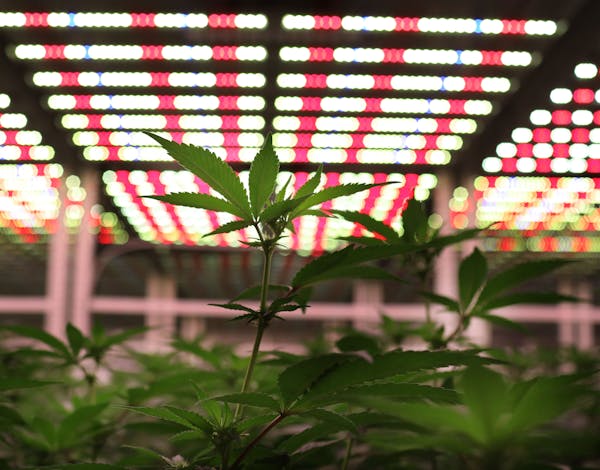Everyone measures spring differently, some by the return of robins, others the sight of geese overhead, still others the sound of sandhill cranes at night, following first the Mississippi, then the St. Croix, en route by mysterious reckoning to Crex Meadows in northwest Wisconsin.
For Lon and Karin Navis, spring arrives in March. It's then that they watch with great care the temperatures morning and afternoon and sense in the higher angle of light the coming of the time they will enter their sugarbush, the name given to a collection of maple trees by those who collect sap in the spring.
Lon and Karin are hobbyists. They do not sell the syrup they ultimately will produce from gathering hundreds of gallons of sap. But neither do they undertake lightly what for them is a decades-old tradition that involves, fundamentally, the maple trees, but also taps and bags to collect sap, strong legs and arms to carry it, tanks to store it and, in the end, a wood-burning cooker over which the sap is boiled down into syrup.
"We've been doing it 30 years and we learn something new every year," Karin said the other day.
As she spoke, Lon threw long pieces of split wood into the big cooker that sits adjacent to the house overlooking the St. Croix River he and Karin built some 40 years ago.
Work-intensive, and not inexpensive, syrup making is difficult to defend, measured by typical standards of time and money spent. But if you appreciate days and nights passed outdoors in the spring, when at night while watching the cooking fire you might hear owls hooting and coyotes yipping, and in the morning, if you're still awake and the boil is holding, you relish being brought alert by a tom turkey gobbling from its roost, then this maple syruping might take hold of you, and, in March, like Lon and Karin, you begin to anticipate it.
• • •
I hadn't intended to collect sap this spring. Living not far from Lon and Karin, and watching their bags go up in their sugarbush, I had a feel for the timing of things. But not until another friend, John Weyrauch of Stillwater, began eying with keen interest the maples on property where my wife, Jan, and I and our boys live did I sense I might be caught up in making syrup.
"I figure I'll collect 20 or 30 gallons of sap," John said. "If I get a gallon or so of syrup, I'll be happy."
So a tapping was begun, first with a few milk jugs, then more properly with the bags and hangers customarily used for sap gathering.
This upgrade in collection methodology in turn begat an expanded need for storage bins and other equipment.
Soon, and perhaps predictably, John's project was mine, too, and money between us was being spent like we had it, this even before John -- seeking information and still more gear -- made a pilgrimage to Anderson's Maple Syrup World Headquarters, near Luck, Wis.
"I figure now if I boil 100 gallons of sap and get three gallons or so of syrup, I'll be happy," John said.
An upstanding citizen, although a lawyer, John, unlike me, lives in a neighborhood, as in a house with neighbors, side to side, and behind.
Whether those neighbors suspected foul play when John last week assembled in his back yard a makeshift kiln of firebrick, I'm unsure. But either way, there he was, his cooker assembled, his wood burning and his sap boiling.
Which is when I told him we had a problem.
"Lon and Karin say the sap, after it's cooked into syrup, needs to be filtered," I said.
"So what's the problem?"
"The nearest filters are in Luck, Wis., at Anderson's Maple Syrup World Headquarters," I said.
I headed to Luck.
Meanwhile --an important consideration for prospective syrup makers -- sap continued to flow. Requiring its collection and storage.
Jury-rigging a 50-gallon plastic farm tank onto the back of my four-wheeler, Cole, 14, our youngest son, soon was careening through our sugarbush, emptying bag after bag of sap into the tank and weighing down the machine so much it nearly stood on its tail.
"We've got a lot of sap, what are we going to cook it with?" Cole asked.
Lon, on my many advice-seeking visits to him now, asked the same question. "What are you going to cook it with?"
"I'll just put some firebricks together like John did," I said.
A retired pilot, and a tinkerer who made his own arch, or cooker, Lon recoiled at the thought.
"I'll weld something for you," he said.
I knew then I was in deep, and by the time, a day later, I walked through the door at Anderson's Maple Syrup World Headquarters, cost containment was out of the question.
"Sell me whatever I need," I said.
I left with a hydrometer, glass quart bottles and caps, glass decorative bottles and caps, a filtering system for me, a filtering system for John, gallon jugs for John, more collection hangers and bags and a couple of very detailed instruction books.
And a credit card receipt.
Wednesday came and went, only a fair collection day for Cole and his now-suffering four-wheeler. Thursday was a little better, with still more sap flowing. And on Friday -- a warm, sunny day following a cold night -- sap flowed continually, like lies in Congress.
• • •
Wholly unusual, March this year has been like April in any other year, and a good April to boot, with sunshine aplenty, birds, too, and rivers in flood.
I have another friend, Kate Wolf, and she and I the other day were talking about making maple syrup. A hunter and trout angler who for some periods of her life lived alone in the woods, Kate recalled fondly years ago when she would retire to a friend's sugarbush for weeks on end, sleeping in a lean-to while gathering sap and boiling it into syrup.
"Those were just great times to be in the woods, in spring," she said. "There was a wolf pack in that area, and I suspect they couldn't figure out just what I was doing there. But being in the woods in spring and cooking that sap, night and day, I enjoyed it very much."
Now, from where I write this, I can look out a window and see my new cooker, all welded and ready to fire. Plenty of wood is also at hand, and over the next few days I, like John, will be looking to boil 100 or more gallons of sap to produce what arguably will be only a communion-size sampling of syrup.
But the produce of this effort, however tasty -- and home-cooked maple syrup is tasty -- isn't the only point.
Maybe this is:
"I came outside yesterday to check on the fire," Lon said, "and there were two eagles in that pine right there."

